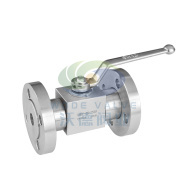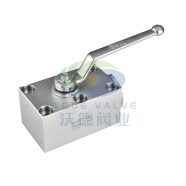News
Maintaining and Troubleshooting Hydraulic Ball Valves in Industrial Systems: A Comprehensive Guide
Time:
Feb 20,2025
Maintaining and Troubleshooting Hydraulic Ball Valves in Industrial Systems
Table of Contents
- 1. Introduction to Hydraulic Ball Valves
- 2. Key Components of Hydraulic Ball Valves
- 3. How Hydraulic Ball Valves Operate
- 4. Best Practices for Maintaining Hydraulic Ball Valves
- 4.1 Regular Inspection Procedures
- 4.2 Cleaning and Lubrication Techniques
- 4.3 Maintaining Seals and Gaskets
- 5. Troubleshooting Common Issues with Hydraulic Ball Valves
- 6. Industry Best Practices for Valve Maintenance
- 7. Conclusion
- 8. Frequently Asked Questions (FAQs)
1. Introduction to Hydraulic Ball Valves
Hydraulic ball valves are critical components in various industrial systems, primarily used to control the flow of liquids and gases. Their unique design, featuring a spherical disc that rotates to open and close the flow, provides excellent sealing properties and minimal flow resistance. Understanding how to maintain and troubleshoot these valves is essential for ensuring the efficiency and reliability of industrial operations.
2. Key Components of Hydraulic Ball Valves
To effectively maintain hydraulic ball valves, we must first understand their key components:
2.1 Body
The body of the valve houses all the internal components and is generally made from durable materials such as stainless steel or brass.
2.2 Ball
The ball is the pivotal part of the valve, containing a bore that allows fluid to pass through when aligned parallel to the flow direction.
2.3 Seats
Seats are the sealing surfaces that create a tight seal when the ball is in the closed position, preventing leaks.
2.4 Stem
The stem connects the ball to the handle or actuator, allowing for the operation of the valve.
3. How Hydraulic Ball Valves Operate
The operation of hydraulic ball valves is straightforward. When the valve handle or actuator is turned, it rotates the ball within the valve body. When the bore of the ball aligns with the inlet and outlet, the valve opens, allowing flow. Conversely, turning the handle 90 degrees closes the valve, stopping the flow.
Understanding this simple operation is vital for effective troubleshooting and maintenance.
4. Best Practices for Maintaining Hydraulic Ball Valves
Regular maintenance is essential to prolong the life and efficiency of hydraulic ball valves. Here are some best practices:
4.1 Regular Inspection Procedures
Conduct regular inspections of hydraulic ball valves to identify signs of wear or potential failure. Look for:
- Corrosion or damage on the valve body
- Loose fittings or connections
- Signs of leakage
Routine checks should be performed every three to six months, depending on the system's usage.
4.2 Cleaning and Lubrication Techniques
Keeping hydraulic ball valves clean is crucial for smooth operation. Use a suitable cleaner to remove dirt and debris from the valve exterior, and if necessary, disassemble the valve for thorough cleaning. Lubricate the stem and any moving parts with appropriate grease to reduce friction and wear.
4.3 Maintaining Seals and Gaskets
Seals and gaskets are essential for preventing leaks. Inspect them regularly for signs of wear or damage. Replace worn seals immediately to maintain the integrity of the valve.
5. Troubleshooting Common Issues with Hydraulic Ball Valves
Even with regular maintenance, hydraulic ball valves can experience issues. Here, we discuss common problems and their solutions.
5.1 Identifying and Fixing Leaks
Leaks can occur at connection points or through worn seals. To troubleshoot:
- **Inspect Connections**: Tighten any loose fittings.
- **Replace Seals**: If leaks persist, replace the affected seals or gaskets.
- **Check Body for Damage**: If the valve body is damaged, it may need replacing.
5.2 Addressing Jamming Problems
Jamming can prevent a ball valve from operating correctly. Common causes include:
- **Debris in the Valve**: Remove the valve and clean it thoroughly.
- **Corrosion**: Inspect for corrosion and replace any damaged parts.
- **Incorrect Installation**: Reinstall the valve, ensuring proper alignment.
5.3 Resolving Performance Issues
Performance issues can manifest as slow or erratic flow rates. To resolve these:
- **Check for Blockages**: Inspect the valve for any blockages in the flow path.
- **Verify Valve Size**: Ensure the valve is appropriately sized for the application to avoid flow restrictions.
6. Industry Best Practices for Valve Maintenance
Adopting best practices ensures that hydraulic ball valves operate efficiently and have a long lifespan.
- **Document Maintenance Activities**: Keep a log of all maintenance and inspections performed.
- **Train Personnel**: Ensure that staff responsible for maintenance are adequately trained in handling and servicing hydraulic ball valves.
- **Utilize Quality Parts**: Always use high-quality replacement parts to maintain valve integrity.
7. Conclusion
Maintaining and troubleshooting hydraulic ball valves in industrial systems is paramount for ensuring optimal performance and preventing costly downtime. By understanding the components, operation, and best practices for maintenance, we can effectively address common issues and extend the lifespan of these critical components. Regular inspections, proper cleaning, and timely repairs will keep your hydraulic systems running smoothly and efficiently.
8. Frequently Asked Questions (FAQs)
What is the average lifespan of a hydraulic ball valve?
The average lifespan of a hydraulic ball valve can range from 5 to 15 years, depending on usage and maintenance practices.
How often should I inspect my hydraulic ball valves?
It is recommended to inspect hydraulic ball valves every three to six months, depending on the intensity of use and operating conditions.
Can I clean a hydraulic ball valve without disassembling it?
Yes, you can clean the exterior of the valve without disassembling it, but for a thorough clean, disassembly is often necessary.
How do I know if my ball valve needs to be replaced?
If you notice persistent leaks, significant corrosion, or if the valve fails to operate properly even after maintenance, it may be time to replace it.
Are hydraulic ball valves suitable for high-pressure applications?
Yes, hydraulic ball valves are suitable for high-pressure applications, provided they are rated for such use and properly maintained.
By implementing the strategies outlined in this guide, you can ensure the effective maintenance and troubleshooting of hydraulic ball valves in your industrial systems. This proactive approach will lead to improved reliability, efficiency, and ultimately, productivity in your operations.
RELATED NEWS




